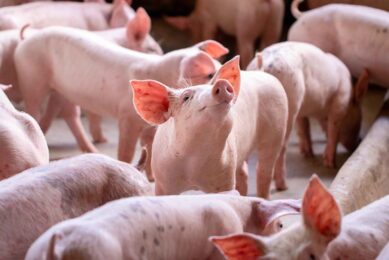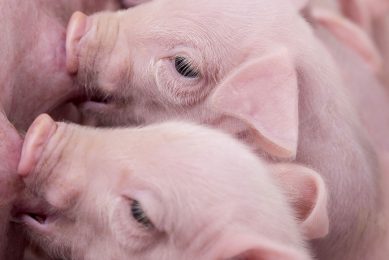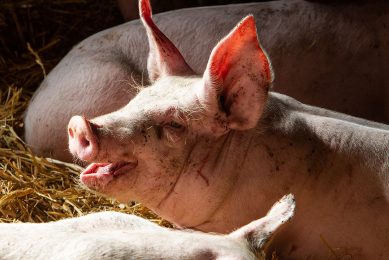EFSA and ECDC zoonoses report: Salmonella cases in humans drops again
The European Food Safety Authority (EFSA) and the European Centre for Disease Prevention and Control (ECDC) have published their annual report on zoonoses and food-borne outbreaks in the European Union for 2009. The report shows Salmonella cases in humans fell by 17% in 2009, marking a decrease for the fifth consecutive year. The report also shows that between 2008 and 2009 the number of laying hen flocks infected with Salmonella fell by 9%.
Campylobacteriosis remained the most reported zoonotic disease in humans, showing a slight increase with 198,252 cases in 2009 compared to 190,566 in 2008 (+4%). In foodstuffs, Campylobacter, which can cause diarrhoea and fever, was mostly found in raw poultry meat; and in live animals, it was found in poultry, pigs and cattle.
“The fall in Salmonella cases in humans is a great achievement and indicates that the control measures put in place by EU Member States and the European Commission are working. EFSA, in cooperation with its partners, will continue to support all efforts to reduce all zoonotic diseases across the EU,” said Hubert Deluyker, EFSA’s Director of Scientific Cooperation and Assistance.
Andrea Ammon, Head of Surveillance Unit at ECDC, added: “Combining surveillance of disease in humans with information from food and animals provides invaluable information that allows the European Commission to target control measures effectively across Europe. ECDC will continue to collaborate intensively with all partners in order to decrease the occurrence of these diseases.”
The report says that the reduction targets set by the European Commission to reduce the spread of Salmonella in poultry, eggs and chicken meat are likely to be the main reasons for the reduction in the number of human cases. The report states that in 2009 17 Member States met their Salmonella reduction targets for laying hens[5] and that the proportion of EU laying hen flocks infected with the targeted Salmonella types continued to fall (3.2% in 2009 compared to 3.5% in 2008).
Pig meat a main cause
Salmonella, which is the second most reported zoonotic infection in humans, accounted for 108,614 human cases in 2009 compared to 131,468 in 2008. The illness it causes, salmonellosis, usually involves fever, diarrhoea and abdominal cramps. For more vulnerable groups, like small children and the elderly, hospital care may in some instances be required. Salmonella also remained the most frequent cause of food-borne outbreaks and was found most frequently in chicken, turkey and pig meat.
Salmonella, which is the second most reported zoonotic infection in humans, accounted for 108,614 human cases in 2009 compared to 131,468 in 2008. The illness it causes, salmonellosis, usually involves fever, diarrhoea and abdominal cramps. For more vulnerable groups, like small children and the elderly, hospital care may in some instances be required. Salmonella also remained the most frequent cause of food-borne outbreaks and was found most frequently in chicken, turkey and pig meat.
The report also gives an overview of other food-borne diseases. Listeria infections in humans showed an increase of 19% in 2009 compared to 2008, with 1,645 confirmed cases. Listeria is known to have a high case fatality rate[6], affecting mostly vulnerable groups, such as the elderly. The report estimates that in 2009 approximately 270 people died in the EU from listeriosis – a fatality rate of 17% amongst those affected by the disease. In foodstuffs, it can be found in types of ready-to-eat food, such as smoked fish and heat-treated meat products and cheeses.
Verotoxigenic Escherichia coli (VTEC) accounted for 3,573 human disease cases in 2009, marking a slight increase from 2008. Among animals and foodstuffs, VTEC was most often reported in cattle and their meat. The number of human cases of Yersinia enterocolitica, another bacterium mostly found in pigs and their meat fell in 2009 to 7,595.
The report says that 5,550 food-borne outbreaks were recorded in the EU in 2009, affecting 48,964 people and causing 46 deaths. The most frequently reported causes of food-borne outbreaks were Salmonella (31% of all outbreaks), viruses (19%) and bacterial toxins (10%). The biggest sources of outbreaks were eggs and egg products, mixed and buffet meals and pork and derived products.
The report covers 14 zoonotic diseases, including Q fever, brucellosis, bovine tuberculosis, rabies and the two parasitic zoonoses, trichinellosis and echinococcosis.
The full version of the report with data by country and annexes is available on EFSA and ECDC websites
Recent communication of the European Commission on Salmonella reduction target:
- Salmonellosis : EU measures helped reduce human cases almost by half in 5 years, report confirms
For more info: EFSA











